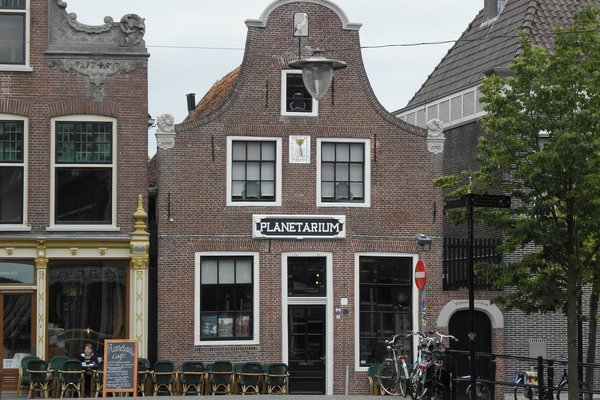Netherlands
Eisinga Planetarium
The Eisinga Planetarium in Franeker holds a mechanical model of the Solar System that contributed to the dissemination of astronomical knowledge to a wider audience.
Dating from the late 18th century, it is the oldest continuously operating orrery in the world realistically showing all planets known at the time. The model mechanically is in fine condition, still works perfectly and continues to be used for educational purposes.
Community Perspective: the highlight and OUV of this small site lies in the living room literally converted into a fully working solar system model; its workings will be shown to you during a 15-minute explanation after a small group has gathered. Do check availability beforehand on the official website.
Site Info
Official Information
- Full Name
- Eisinga Planetarium in Franeker (ID: 1683)
- Country
- Netherlands
- Status
-
Inscribed 2023
Site history
History of Eisinga Planetarium
- 2023: Name change
- Upon inscription, at the suggestion of ICOMOS: from "Koninklijk Eise Eisinga Planetarium (Royal Eise Eisinga Planetarium)" to "Eisinga Planetarium in Franeker"
- 2023: Inscribed
- Inscribed
- Type
- Cultural
- Criteria
- iv
Links
- UNESCO
- whc.unesco.org
- Related
-
- planetarium-friesland.nl — Planetarium Friesland
All Links
UNESCO.org
- whc.unesco.org — whc.unesco.org/
Related Resources
- planetarium-friesland.nl — Planetarium Friesland
Community Information
- Community Category
- Secular structure: Science and Education
Travel Information
Amsterdam hotspot
Recent Connections
-
Astronomical clocks
"built 1774–1781, is an orrery and astr…
-
Named after individual people
Eise Eisinga, a Frisian amateur astrono… -
Name changes
Upon inscription, at the suggestion of …
Connections of Eisinga Planetarium
- Trivia
-
-
Smallest cultural WHS
0,00900 ha.
-
- Damaged
-
-
Damaged in World War II
"During a bombing raid in World War II, a bomb fell about 150 metres from the planetarium, which led the cogwheel mechanism to come to a standstill and the Mercury wheel broke in two. It was replaced by an identical one, after which the mechanism was put back into operation." (AB ev)
-
- World Heritage Process
-
-
Perfect Inscriptions
2023 -
Inscribed on a single criterion only
Crit iv
-
- Constructions
-
-
Astronomical clocks
"built 1774–1781, is an orrery and astronomical clock which shows the movements of the solar system"
-
- Timeline
-
-
Built in the 18th century
"Built between 1774 and 1781" (AB ev)
-
- WHS Hotspots
-
-
Amsterdam hotspot
Amsterdam - Franeker is 125km. By train it takes about 2h50mins.
-
- Science and Technology
-
-
Astronomy and Astrology
"As a technological ensemble, it continues to contribute to the dissemination of astronomical knowledge, and in particular to the understanding of the heliocentric model of the Universe." (OUV)
-
- WHS Names
-
-
Named after individual people
Eise Eisinga, a Frisian amateur astronomer who built the Eise Eisinga Planetarium in his house in Franeker.See en.wikipedia.org
-
Name changes
Upon inscription, at the suggestion of ICOMOS: from "Koninklijk Eise Eisinga Planetarium (Royal Eise Eisinga Planetarium)" to "Eisinga Planetarium in Franeker"
-
News
No news.
Recent Visitors
Visitors of Eisinga Planetarium
- Adrian Turtschi
- Alexander Lehmann
- Ana Lozano
- Antonio J.
- Argo
- ArnaudFilloux
- Ask Gudmundsen
- Assif
- Atila Ege
- Avery MC
- basementonline
- Bernard Joseph Esposo Guerrero
- Bin
- BMuramatsu
- BobSmithseestheworld
- Bram de Bruin
- Brendan Carroll
- Caspar
- Cezar Grozavu
- Cheryl
- ChrisDorn
- christof
- Christoph
- Christravelblog
- Claire Bradshaw
- Clyde
- Colossus
- Daniel Chazad
- Dimitar Krastev
- Dirk-pieter
- Dwight Zehuan Xiao
- Echwel
- Els Slots
- Enid MC
- Errol Neo
- Evgenii
- Femke Roos
- Fernweh
- FrankW
- Frederik Dawson
- frizzle
- Galgalula
- Geert Luiken
- George Gdanski
- Hadrianus
- heywhatever2
- Hubert
- Ian Cade
- Ingrid
- Ivan Rucek
- Jakob F.
- Janina Lehmann
- Jan-Willem
- Jan Zimmermann
- Jarek Pokrzywnicki
- Jay T
- Jeanne OGrady
- JessicaDS
- Jonas Kremer
- jonstst
- Joyce van Soest
- Kasia M.
- Kbecq
- Krijn
- Kurt Lauer
- Lucio
- Maciej Gil
- Martina Rúčková
- MaYumin
- MH
- Mikko
- MoPython
- Mstrebl1990
- nan
- Nihal Ege
- PabloNorte
- Patrik
- Paul Schofield
- Peter Lööv
- Philipp Peterer
- Rafał Kałczuga
- Ralf Regele
- Randi Thomsen
- Rick Ohm
- Rodinia
- Roger Ourset
- Roman Bruehwiler
- Ronbon
- Rudegirl
- Sandra!
- Sebasfhb
- serghei.belous
- Simonh
- Slavi
- sncjob
- stephanvermeulen
- Stijn
- Svein Elias
- Taotao Chen
- Thomas Buechler
- Thorben
- Tinuszke
- tony0001
- Tony H.
- Tsunami
- usagi1974
- Valentina
- Veronica
- WalGra
- Wimmy
- Wojciech Fedoruk
- Yevhen Ivanovych
- Zach
- Zhenjun Liu
- Zoë Sheng
Community Reviews
Show full reviews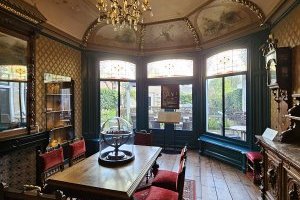
Visited in April 2024. What a fun little site! That was my initial reaction after visiting the Eise Eisinga Planetarium. Sites like these make the World Heritage hunting worthwhile. I'm not a huge space or planetarium enthusiast, so I would have most likely skipped this place if I had stopped for whatever reason in Franeker, the town where the planetarium is located. But because the planetarium is a WHS, that was my sole reason to arrive in lovely Franeker.
When you arrive to the planetarium you're first surprised how small the building is. After getting your ticket you first walk through a basic planetarium exhibition, mostly geared towards children, and I happened to share my visit with a group of pre-school children, who were more interested of the sound that the wooden floors make when you run on them than anything space related. I watched a video about Eise Eisinga, the mastermind behind the planetarium, and walked through the exhibition rooms that told the history of astronomy, Eisinga's family and the town on Franeker. It was interesting to learn that Franeker used to be a bustling university town until Napoleon destroyed the university.
The entrance ticket includes a guided visit to the actual planetarium room. These are held in Dutch and English and they announce when the next one starts on the central radio. I was quite surprised that I wasn't the only one in the English briefing on that day (weekday in April). I have to say, …
Keep reading 0 comments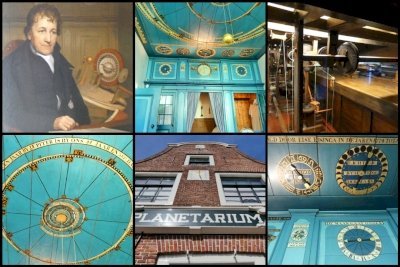
I visited this tWHS in April 2022. I must say that the Netherlands in general really has a treasure trove of quaint well-presented little museums. I truly can't see how this little gem, dubbed as the world's oldest working planetarium, won't make it on the WH list just like the splendid Plantin Moretus, Ir. D.F. Woudagemaal or the Rietveld Schröder House.
The facade of the Eise Eisinga house in Franeker, Friesland, was built on a canal well before 1768 (this date can be seen on the stone of the facade but it's actually the year in which the facade was replaced). Overall the facade is quite plain with the usual gable roof. The nearby coffee shop is much more ornate with a lovely Art Nouveau interior. However, the highlight and OUV of this tWHS lies mainly in the living room literally converted into a fully working solar system model with the sun in the centre and the planets known at that time circling around it. The outer three planets, Uranus, Neptune and Pluto are missing as they had not been discovered by the time the model was built.
Entrance now costs 6 euros and whenever there are enough people, a lovely knowledgable old lady closes the living room door, fetches a long bamboo stick, and gives a brief explanation on the planetarium or orrery in Dutch, English or German. I revisited the room more than a couple of times practically listening to the explanation in three languages as …
Keep reading 0 comments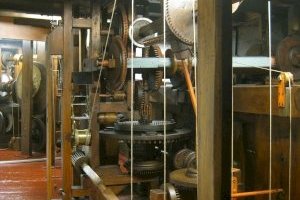
In human history, there have always been individuals who were ahead of their time. Eise Eisinga was one of those. Actually a wool comber, he was also an amateur astronomer (and what an astronomer he was!).
In 1774, another Dutch amateur astronomer (and self-proclaimed preacher), Eelco Alta, predicted the end of the world, believing a rare conjunction of the Moon and the then-known four planets Mercury, Venus, Mars and Jupiter would inevitably lead to a crash of the celestial bodies and the destruction of the Earth.
To invalidate these arguments, autodidact and highly gifted Eisinga started to build an orrery in his living room (and finished seven years later), what is today the oldest working model of the solar system and the largest mechanical planetarium in the world. Its accuracy and steadiness are admirable. The modeled planets move imperceptibly and complete one circumlocution per real-time orbit. He individually forged each of the 10,000 nails for the gearing teeth, and he painted and gilded his work in a decorative and informative way. In 1818, King William I of the Netherlands and Prince Frederik visited the orrery and bought it for the Dutch state. Later, it was donated to the city of Franeker.
As Els and Zoë have already written, this brilliant work definitely belongs on the World Heritage List. Apparently, the admission will be decided in 2023. I am sure it will fulfill the three application criteria, amongst them "masterpiece of human creative genius". Here in this community, …
Keep reading 0 comments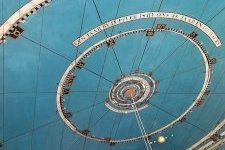
The northern town of Franeker is a typical dutch affair, cobble streets, canals, people parking AT the side of the canals (I wonder how many cars have dropped in due to bad parking) and there is free parking just outside of town with only a few minutes walk to the planetarium.
This should already be on the WH list, ages and ages ago. It has a lot more going than "Defense Lines" or a canal ring, or Schokland obviously, and I'm not directly saying these are bad sites but the planetarium has a huge unique clockwork going that, flawed a little because it does not account for leap years, still works today, as well a super interesting museum padding it. I wish to have a wide-angle camera just for the planet room, and I would like to spend more time just seeing the gears working - fascinating.
Although you can browse around by yourself it really helps to attend the Dutch/English talk where you can ask questions. Overall if you are open for learning about astronomy it can take 2 hours to get through the li'l house.
Keep reading 0 comments
After having visited all Dutch Tentative Sites on European soil, I believe that this is the strongest proposal. Its subject, astronomy explained to the general public, is pretty unique. Also, it can fill a gap in the List as the history of science is currently deemed underrepresented. Especially the long regional and cultural tradition of the 'lay scholar' is praised here.
The Planetarium lies in the Frisian town of Franeker. This is a prominent city in the history of the Netherlands: it held the second oldest university. It has a marvellous city hall for example, and many other fine old buildings.
Eise Eisinga was an autodidact who built this small Planetarium or Orrery in 1781. It is the oldest of its kind that still works. He constructed his model of the galaxy on the ceiling of his living room. It is a sky-blue wooden structure, with moving elements steared by an intricate mechanical clockwork structure on the attic above. He received a lot of visitors in his time who came to see this, both prominents and schoolchildren.
His former house now is a little museum. The entrance fee is 4.5 EUR. A fifteen minute explanation of the structure is included. It's really fascinating to see how it all works: how the planets move relative to each other, but also what time it is, which date, which year. Eisinga also left behind an entire manual about how it all functions, including instructions for future caretakers.
Keep reading 0 comments
